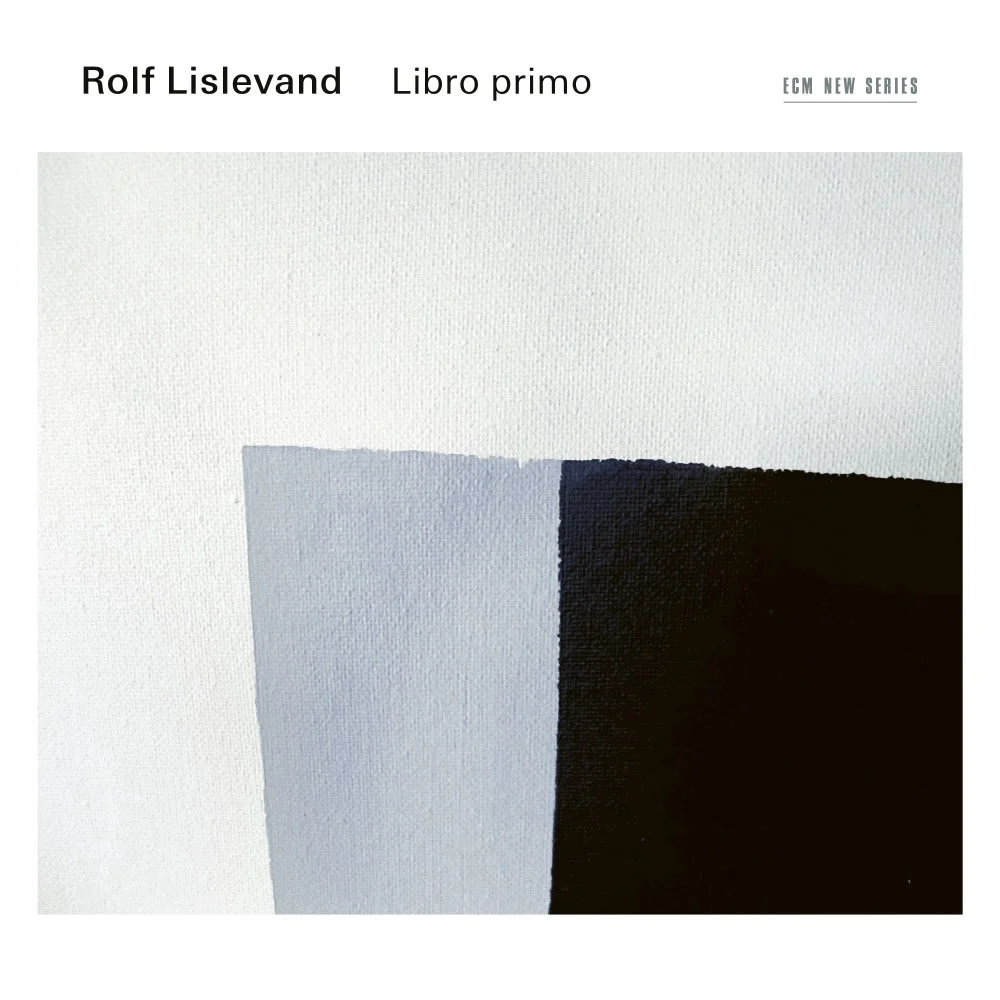August 29: ECM New Series Releases Rolf Lislevand's new album Libro primo
ECM New Series Releases
Rolf Lislevand: Libro primo
Works for archlute and chitarrone by Johann Hieronymous Kapsberger, Giovanni Paolo Foscarini, Bernardo Gianoncelli and Diego Ortiz
ECM 2848
Release Date: August 29, 2025
“Il libro Primo”, a writer or a musician's first volume of works, can often hold the most inspired and radical creations of an artist. This recording is dedicated to the works of Italian composers for lute in the first half of the 17th century, largely published in their first printed books. – Rolf Lislevand (from the performer’s note)
On his newest recording for ECM’s New Series, lute virtuoso Rolf Lislevand turns to the revolutionary Baroque literature for archlute and chitarrone, interpreting the works of some of the most significant 16th-17th century lute composers. In striking solo performances, the Norwegian lute player explores the progressive nature of pieces by Johann Hieronymous Kapsberger, Giovanni Paolo Foscarini, Bernardo Gianoncelli and Diego Ortiz. The modernity of this music’s melodic and rhythmic sensibility throughout can be surprising, not only substantiating Lislevand’s deeper dive into this repertoire, but also revealing a broad idiomatic reach that can still sound highly contemporary today.
“The new style marked a departure from traditional Renaissance polyphony,” Lislevand writes in the performer’s note accompanying the disc. The so-called nuove musiche gave “rise to unusually dissonant and bold harmonic idioms as well as an altogether newfound ability to express the emotional content of text accompanied by previously unheard notions of rhythmical intricacy.”
In a way, the album can be understood as a continuation of his last New Series recording, 2016’s La Mascarade, which saw him approach the works of Louis XIV court composers Robert de Visée and Francesco Corbetta in a programme that BBC Music Magazine called “a hauntingly beautiful musical chiaroscuro”. Turning its focus from France towards Baroque Italy, Libro primo too deals with the juxtaposition of light, bright sounds with obscurer, darker-toned shadings, respectively linked to the archlute and the chitarrone. As the repertoire and musical forms evolved during the 17th century, so did the instruments, with the newly invented lutes reflecting the contrast and tension between light and dark – the chitarrone (or theorbo) being inhabited by a somber, bass-heavy sound, while the archlute has a bright, overtone-rich character.
Lislevand takes historically informed liberties in his interpretations throughout the programme, improvising frequently, as was custom at the time, and even contributes his own personal study of the challenging Passacaglia form with his “Passacaglia al modo mio”. Delving deeper into the musical fabric of the time, he also decided on a different tuning for the archlute than is commonly used today, “giving the music an adventurous timbre, more in line with the nuove musiche.”
The Toccata was among the principal new forms in Baroque lute music, of which Kapsberger was a pioneer. Lislevand interprets several of his Toccatas here, delivering them with lyrical precision but also playful spontaneity, as he improvises connecting interpolations. The same improvisatory approach graces Foscarini’s Tasteggiata, which Lislevand transcribed from the Baroque guitar to the archlute, adding harmonic ideas and setting it in a rondeau form.
Two Recercardas by the Spaniard Diego Ortiz make up the only pre-17th century portion of the music included here. Their qualification for this otherwise strictly Italian Baroque programme is an unexpected inner-musical connection to the century younger pieces by Kapsberger. “In two different timelines,” Lislevand explains, “both composers employ unique rhythmical fantasy and skill in order to achieve expressivity.”
“As Baroque composers were contemporarily within their own time, playing their own compositions and improvising in performance according to the idiomatic set of tools available back then, so are we performers contemporarily within our own time today,” says Lislevand. “Caught in an ongoing creative process, we can’t help but incorporate ourselves into the flow of history by approaching the music from a constantly evolving point of view.” Thus, the Norwegian lute virtuoso, with his own expressive approach, brings this four centuries old music thoroughly into the present.
Recorded at Moosestudios, Norway between 2022 and 2023, and mixed in Munich in 2024, the album was produced by Rolf Lislevand and Manfred Eicher.

